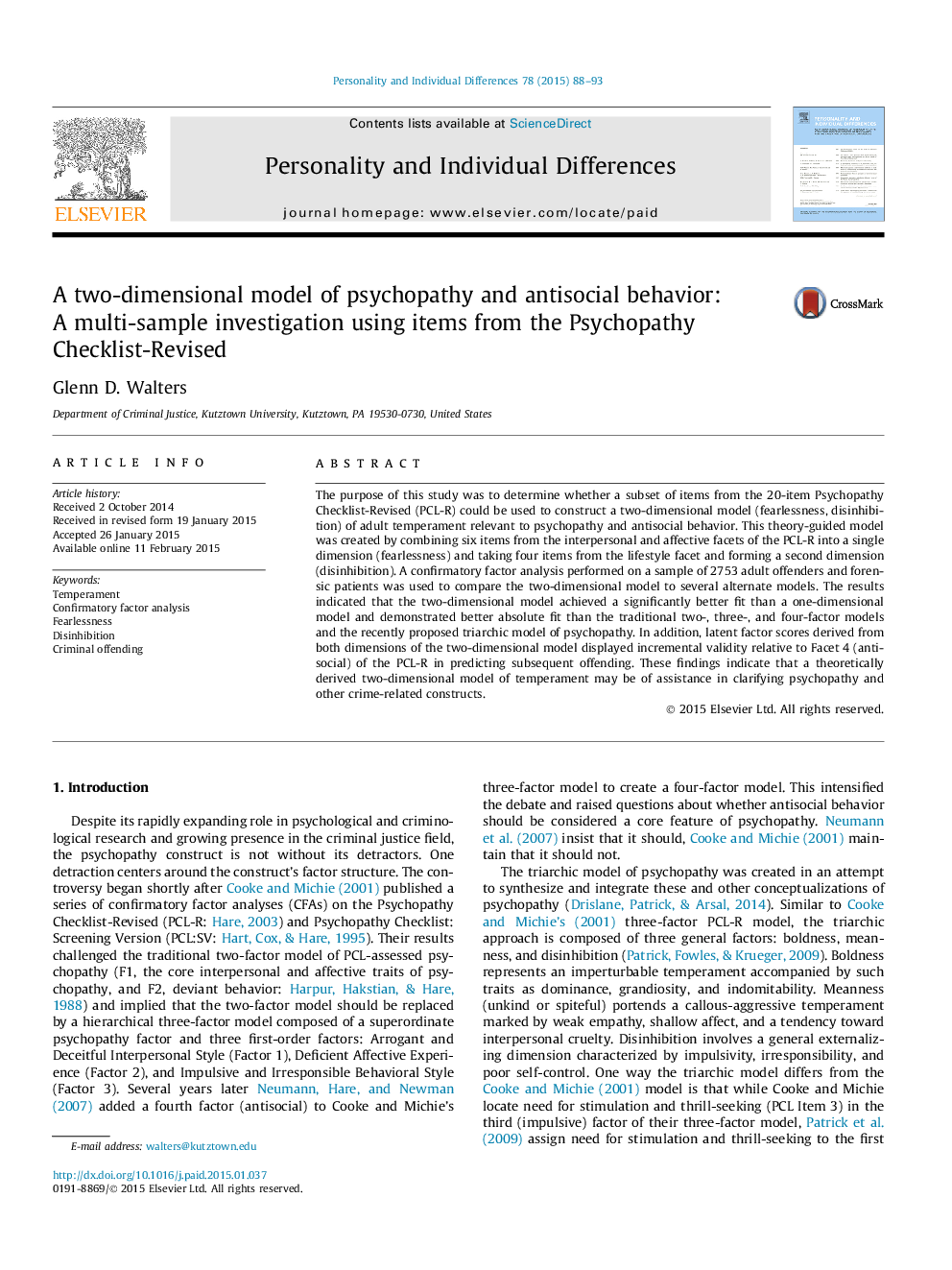| Article ID | Journal | Published Year | Pages | File Type |
|---|---|---|---|---|
| 890185 | Personality and Individual Differences | 2015 | 6 Pages |
•Ten PCL-R items were used to construct a two-dimensional model of psychopathy.•The two-dimensional model consisted of fearlessness and disinhibition.•A confirmatory factor analysis revealed support for the two-dimensional model.•Latent factor scores of both dimensions successfully predicted offending behavior.
The purpose of this study was to determine whether a subset of items from the 20-item Psychopathy Checklist-Revised (PCL-R) could be used to construct a two-dimensional model (fearlessness, disinhibition) of adult temperament relevant to psychopathy and antisocial behavior. This theory-guided model was created by combining six items from the interpersonal and affective facets of the PCL-R into a single dimension (fearlessness) and taking four items from the lifestyle facet and forming a second dimension (disinhibition). A confirmatory factor analysis performed on a sample of 2753 adult offenders and forensic patients was used to compare the two-dimensional model to several alternate models. The results indicated that the two-dimensional model achieved a significantly better fit than a one-dimensional model and demonstrated better absolute fit than the traditional two-, three-, and four-factor models and the recently proposed triarchic model of psychopathy. In addition, latent factor scores derived from both dimensions of the two-dimensional model displayed incremental validity relative to Facet 4 (antisocial) of the PCL-R in predicting subsequent offending. These findings indicate that a theoretically derived two-dimensional model of temperament may be of assistance in clarifying psychopathy and other crime-related constructs.
